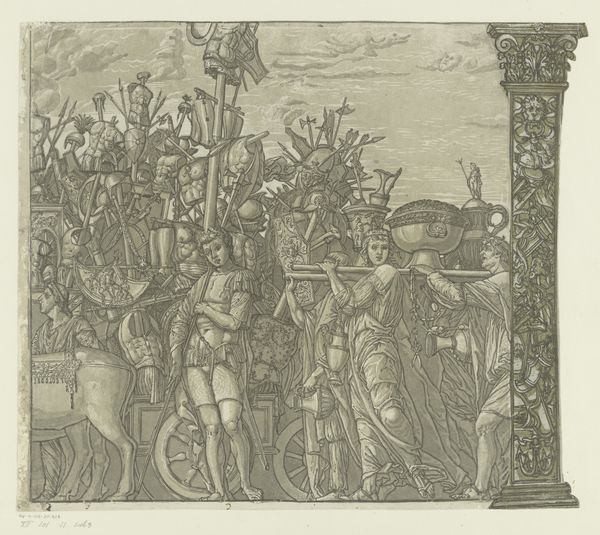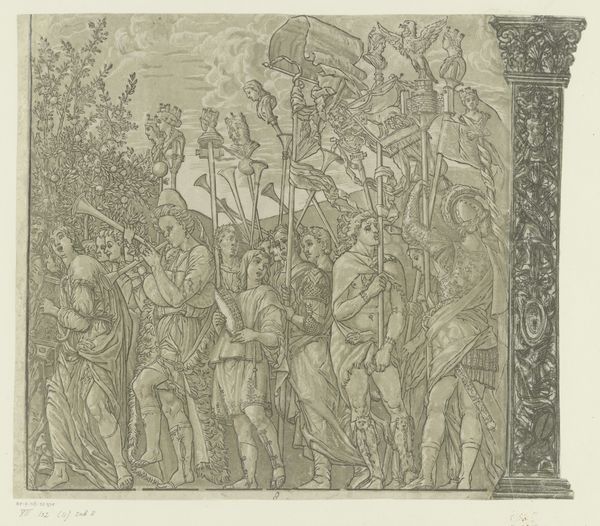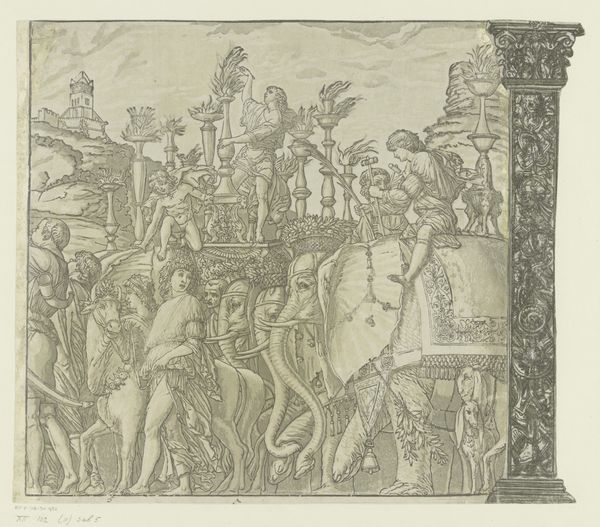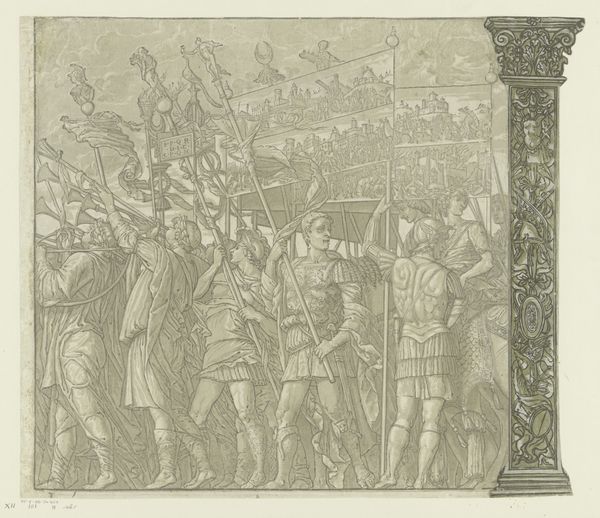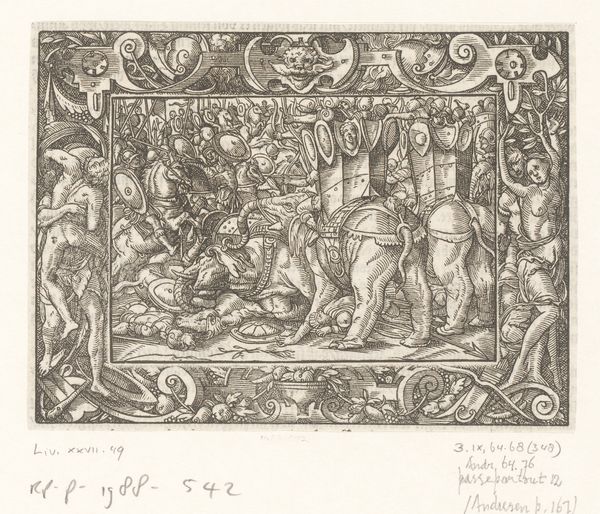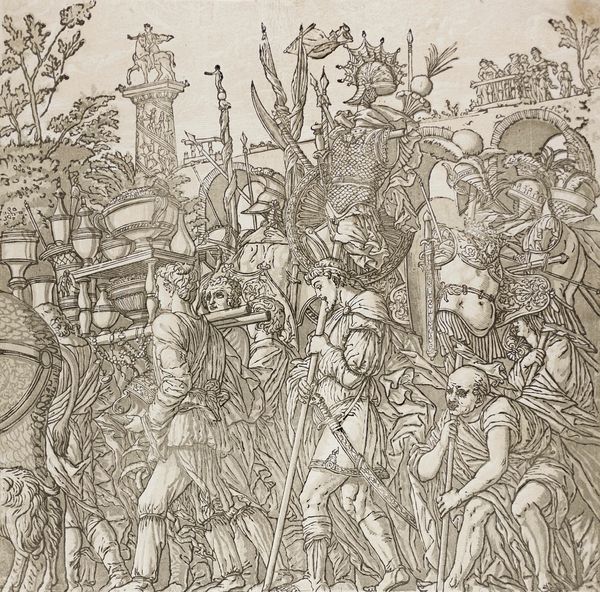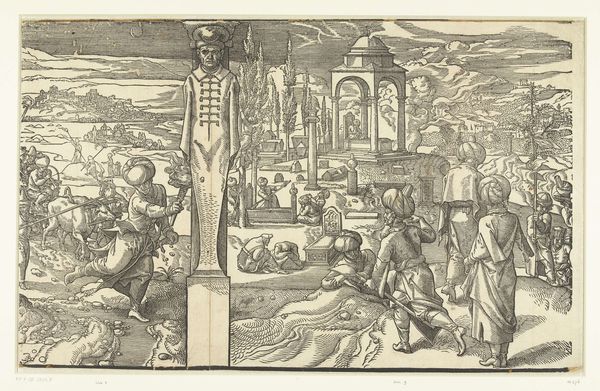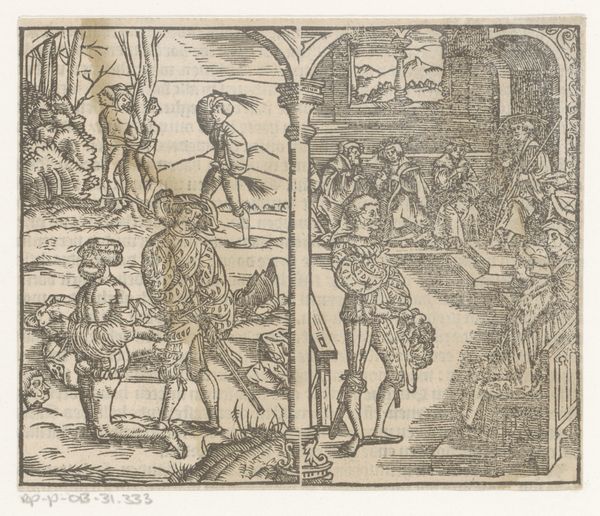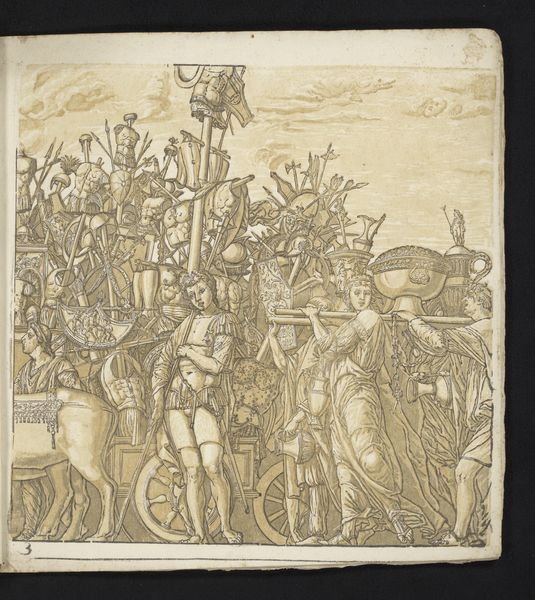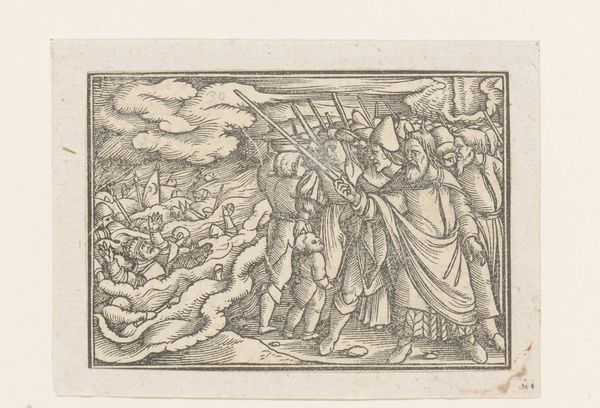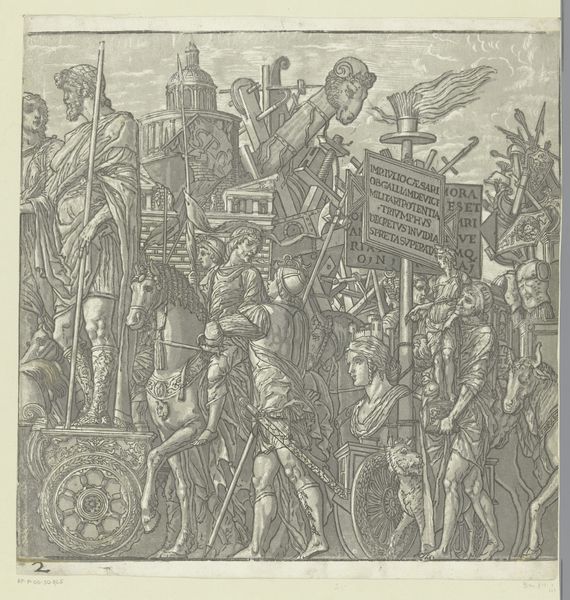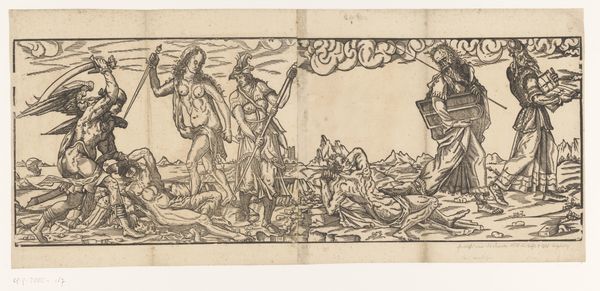
print, engraving
# print
#
mannerism
#
figuration
#
form
#
line
#
history-painting
#
italian-renaissance
#
engraving
Dimensions: height 373 mm, width 415 mm
Copyright: Rijks Museum: Open Domain
Curator: Andrea Andreani created this print, "The Triumph of Julius Caesar," in 1599. It resides here at the Rijksmuseum and provides insight into Italian Renaissance artistic practices. Editor: My first thought is of controlled chaos. There's such detail, yet the scene feels overwhelming, even oppressive, with this sense of forward momentum trampling everything in its path. The overwhelming sameness robs individuals of humanity. Curator: Yes, let's consider this print as a piece of historical propaganda. We must ask: what social and political narratives did its imagery create and reinforce? How did prints like this legitimize power structures? Editor: I am especially intrigued by the consistent portrayal of triumph, but in this instance, I feel an emotional paradox in observing figures being paraded like possessions after war. I question if it accurately depicts history or glorifies what it shouldn't. It is indeed complex to contextualize historical pieces when viewing them through a contemporary social framework. Curator: Consider how Renaissance-era displays of triumph are rooted in earlier Roman traditions of parading captured spoils and subjugated peoples. This connects visual art to broader social practices surrounding power. Editor: What does it mean for a man to be presented as if victorious while walking along with so many things stolen? What's the interplay between masculine bravado and the real consequences of political violence upon the individual, especially those rendered into objects and possessions through war? Curator: I see this piece prompting an interrogation of Italian Renaissance visual culture and its connections to empire. What does this focus on Caesar communicate? Editor: We have to challenge the presumed authority embedded within art to fully appreciate how such imagery affected its original audiences and how it impacts contemporary conversations on gender, power, and historical representation. The lack of any contrast amplifies an oppressive, flattened dynamic. Curator: Indeed, through this artwork, the intersections of gender and politics manifest as something to be actively confronted when navigating Renaissance visual history. The study of these is how this piece keeps the art world honest about itself. Editor: By encouraging discussion of its subject matter, the work avoids becoming an echo chamber of the ideas and events that shaped the period.
Comments
No comments
Be the first to comment and join the conversation on the ultimate creative platform.

